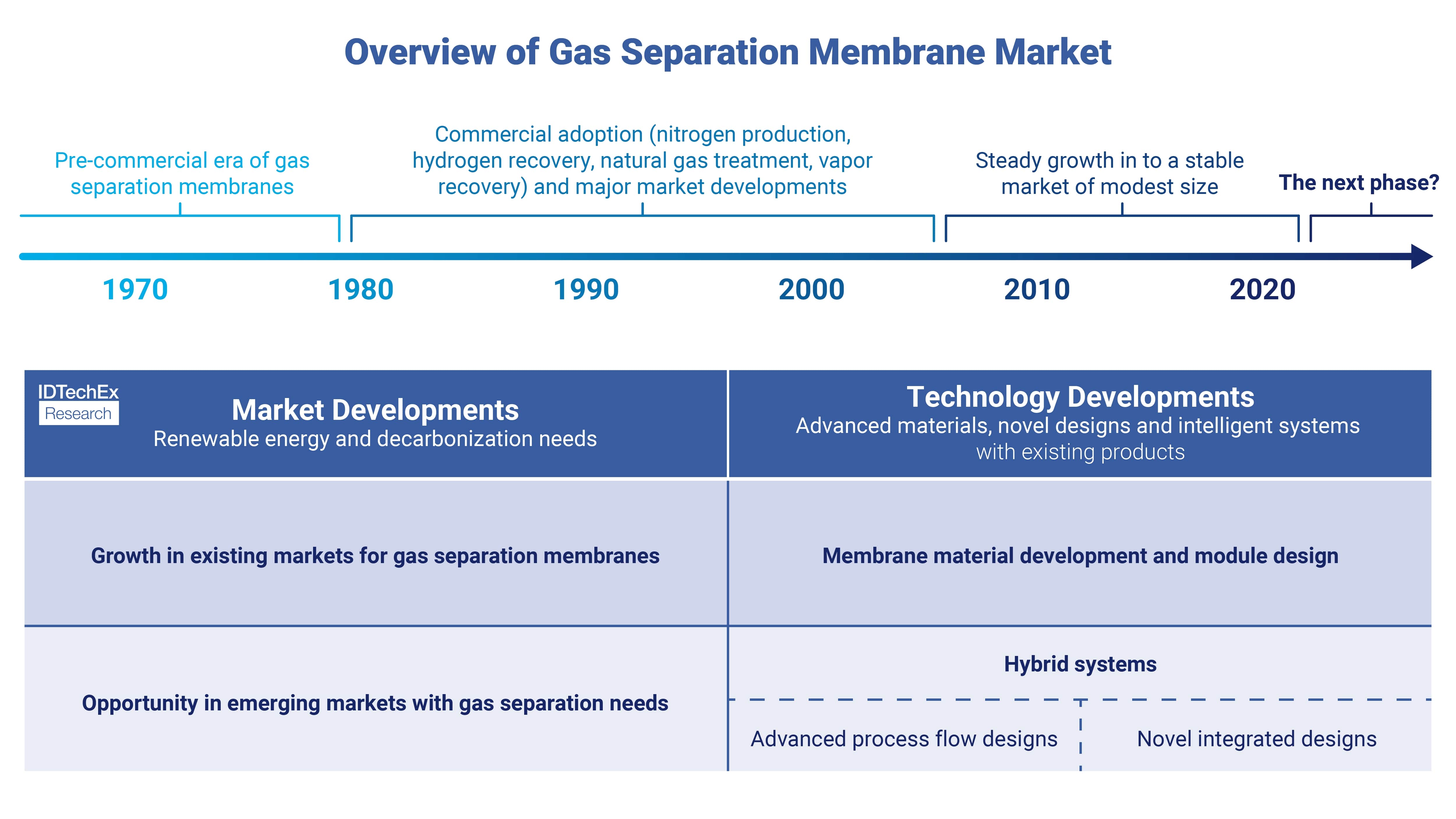CCUS is a central part of every industrial decarbonization roadmap. At its heart, this is a separation challenge, which therefore brings about the question of whether membranes can be used.
Membranes are a very attractive solution. They can offer an energy efficient route to gas separation, which is a large advantage in any technoeconomic analysis, but that is not the complete picture. Membranes have several limitations; most significantly, polymeric membranes have a pay-off between permeability and selectivity.
In post-combustion carbon capture, the main separation is CO2/N2. There are multiple challenging considerations, including that the flue gas is usually at atmospheric pressure, with relatively low CO2 concentration, and often a wide range of contaminants. Membranes are pressure driven systems; if a large amount of compression is required prior to the membrane module, then you can immediately say goodbye to that energy efficient advantage.
IDTechEx provides critical, independent analysis on both the fields of CCUS and gas separation membranes. In their reports, “Carbon Capture, Utilization, and Storage (CCUS) Markets 2023-2043” and “Gas Separation Membranes 2023-2033” technology roadmaps, benchmarking studies, market forecasts, and interview-based player profiles are provided.
Some players are looking to deploy existing membranes for post combustion carbon capture, but most have accepted that this is unfeasible. Instead, many are looking to advanced membrane as an enabling solution; with a key focus in dramatically increasing the permeability.
This has been an active area of R&D for a long time but is now reaching the stage of early-stage commercial trials from MTR, Compact Membrane Systems, Aqualung (NTNU research), Cool Planet Technologies (Helmholtz-Zentrum Hereon research) and more. These early deployments have both material and design considerations, and the results will be very telling as to the potential for membranes. For a full company and technology landscape see the IDTechEx market report, “Gas Separation Membranes 2023-2033”.
Of course, the competitive landscape is far from stationary. Amine scrubbing is the most typically employed and what many benchmark against, but there are many others at various levels of commercial maturity. Solid sorbents are stepping into the limelight; in particular, metal-organic frameworks (MOFs) are gaining significant momentum in the industry. By the time those advanced membranes are ready to deploy at scale, the incumbent landscape may look very different.
The previous section focussed on post-combustion carbon capture. There are other routes and opportunities for carbon capture including pre-combustion approaches. Again, membranes have been considered in these applications, but there are different considerations here. Firstly the main separation challenge is H2/CO2, and the conditions, for example, to integrate into an IGCC facility are very different. Different membranes may have a higher degree of selectivity for CO2 or H2, and although there have been some interesting studies, this will likely remain at an early stage.

Finally, the question is whether membranes must be used either in isolation or as a primary separation technique. One emerging space of combining membranes with absorbents, such as liquid amines, as shown by the likes of the start-up Ionada amongst others. Equally, Air Liquide is a major player and has made use of their existing membrane know-how and technology in their CryoCap H2 process alongside a cryogenic separation unit.
As discussed, the central question of carbon capture is that of efficient gas separation. Incumbent membranes may not be suitable as the primary approach, but material and engineering developments are progressing out of the lab and into promising commercial trials. For more information on these developments and other key progressions in the industry, see the IDTechEx market report, “Gas Separation Membranes 2023-2033”.
About IDTechEx
IDTechEx guides your strategic business decisions through its Research, Subscription and Consultancy products, helping you profit from emerging technologies. For more information, contact [email protected] or visit www.IDTechEx.com.












